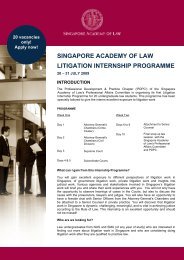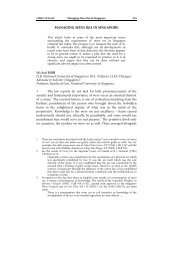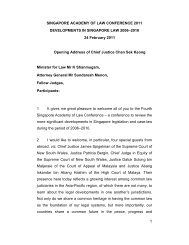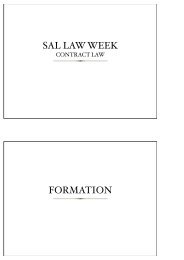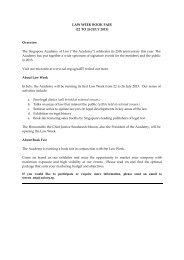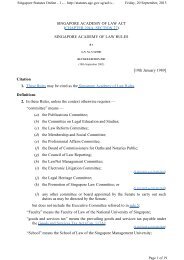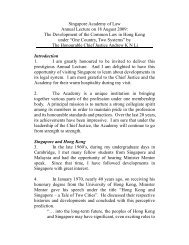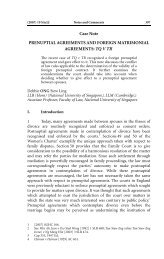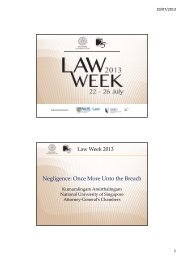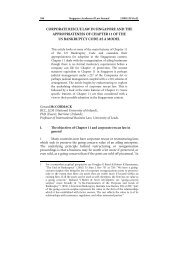View Article - Singapore Academy of Law
View Article - Singapore Academy of Law
View Article - Singapore Academy of Law
You also want an ePaper? Increase the reach of your titles
YUMPU automatically turns print PDFs into web optimized ePapers that Google loves.
15 SAcLJ Matrimonial Assets and the 3 rd Party 231<br />
2002) against his three siblings. He sought a declaration from the court<br />
that a certain property (the Ringwood bungalow) belonged to the estate<br />
<strong>of</strong> his late mother and that the legal owners (his siblings and himself)<br />
only held the property on trust for the mother’s estate. If the property<br />
belonged to the mother’s estate, the husband’s share would be 50%<br />
under the will <strong>of</strong> the mother. If the property belonged to the legal<br />
owners, the husband would have a one third share in the property. The<br />
court’s decision on whether the property belonged to the mother’s estate<br />
would therefore affect the pool <strong>of</strong> matrimonial assets available for<br />
distribution. The High Court suit was still pending at the time <strong>of</strong> the<br />
ancillary matters hearing in the Family Court. The Family Court<br />
nonetheless proceeded to hear the ancillary matters, and to make an<br />
“alternative order”. The wife was given a 15% share <strong>of</strong> the husband’s<br />
one third share <strong>of</strong> the Ringwood bungalow, on the basis that the property<br />
belonged to the legal owners. However, the Family Court went on to<br />
order that in the event that the High Court found that the Ringwood<br />
bungalow belonged to the estate <strong>of</strong> the husband’s mother (thus entitling<br />
the husband to 50% <strong>of</strong> the property), the husband was to pay the wife<br />
15% <strong>of</strong> his additional 16.66% 26 share in the property.<br />
2.3.3 Clearly not a matrimonial asset<br />
24 The court may decide that the asset or part <strong>of</strong> the asset claimed<br />
by the 3 rd party is clearly not a matrimonial asset, without having to<br />
decide the 3 rd party’s share <strong>of</strong> that asset. For example, in the case <strong>of</strong> Goh<br />
Heok Hoon (m.w.) v Ang Kok Keng, 27 the husband claimed that certain<br />
monies in a bank account were held by him on trust for his mother. The<br />
wife claimed that these monies belonged to the husband. She did not<br />
claim that they were a gift from the husband’s mother to her, or to both<br />
her and her husband. After examining the evidence, the Family Court<br />
stated that it was not clear whether the monies were held by the husband<br />
on trust for his mother, or whether the said monies were a gift from his<br />
mother to him, but held that in any event, whether a trust or a gift, they<br />
were not a matrimonial asset, and would not be taken into account in the<br />
division <strong>of</strong> matrimonial assets. (The appeal by the husband against the<br />
orders on division <strong>of</strong> matrimonial assets was dismissed.)<br />
25 It is important, therefore, to analyse the claims being made by<br />
each <strong>of</strong> the parties, in order to ascertain whether the court must make a<br />
decision regarding the 3 rd party’s share in the matrimonial asset before<br />
26<br />
27<br />
Which is roughly 50% less 33.33% (the one third share).<br />
unreported, Divorce Petition No. 602801 <strong>of</strong> 2001



